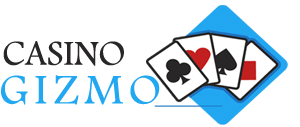All new players start out with the basics when they first learn poker strategy. This covers pre-flop and flop strategy, but many players aren’t sure what to do in the next stages. The pre-flop and flop strategies are the easiest to learn, but you won’t progress far without knowing how to play the turn and the river. These phases are a lot more complicated, as there are more variables to consider and a lot of different scenarios to prepare for.
How pros decide to play the turn and the river will depend on a number of factors, but there are a few basic rules that they all follow. You can try these rules out for yourself with online poker, playing how the pros do and seeing how it affects your success.
Playing the Turn
The turn is so-called because it can potentially turn your luck around. While the flop will give you a good idea of whether your hand is strong or not, the turn will confirm it and can also potentially turn a weak hand into a strong one. It’s also sometimes known as the fourth street, as it’s the fourth community card that’s dealt.
The decisions you make on the turn will be affected not only by your hand and the community cards but also by your actions pre-flop and post-flop, plus the actions of your opponents. So, naturally, the large number of variables means it can get very complicated, and picking the right strategy is never easy.
Before deciding on which action to take, pros ask themselves a simple question. “Is it really worth this money to see the next cards?.” In most cases, pros will only keep betting if they believe they have a strong hand or only need one more card to make a strong hand. Playing an average or low-ranked hand is never the best strategy unless you’re bluffing, and it’s usually better to fold and wait for the next hand.
If the turn card doesn’t improve their hand, pro players will usually fold rather than call the current bet. It’s important to calculate the pot odds in this situation, working out whether investing more money into the pot will still be worth it in the long run. This is a skill that is developed over time with practice and experience.

Pros will also do their best to read their opponents here. The opponent’s actions will affect their choice, although they have to be careful of bluffing. For example, a player might note that their opponent is frequently raising, which implies they have a strong hand. In this situation, a pro would normally fold if they have a weak hand.
Playing the River
No one knows why it’s called the river, but one theory is that as poker was played on riverboats, cheats would often be thrown into the river. It’s also sometimes known as fifth street as it’s the fifth and final card that’s dealt. River strategy in poker is largely dependent on your position at the table. Although position is important in all phases, it’s even more so here. Playing last gives any pro a big advantage over any opponent, as they can make a good guess at their hand from the action they take.
At this point in the game, any pro should be very confident in their hand, and now is the best time for them to raise and maximize their winnings as much as possible. If they’re still in the game without a strong hand, it’s likely that they were bluffing, and they need to play it carefully to ensure they don’t lose too much.
Most pros will avoid betting on the river unless they’re certain they have the best hand. They can tell what hands their opponents have by following their behavior during the previous stages and watching for patterns from previous hands. However, if they don’t have the best hand, they have a few options depending on their position. Being in an early position gives them no choice but to call and turn the cards over while being in a late position, they can choose to fold or call.
Playing poker successfully is all about managing risk and making the most of opportunities when they appear. Through carefully playing the right strategy during the turn and the river, it’s possible to win consistently. However, it’s a lot easier said than done. You’ll need a lot of experience to play like the pros, but knowing this outline is the first step toward being successful.

